We had planned to send our packs ahead for the descent into Zubiri, but when we woke, we were eager to set off and had completely forgotten our plan. We were deep in discussion and walking down the road, when we remembered how treacherous the descent into Zubiri can be. Perhaps we should go back? It would only have been an extra kilometre, but no, we decided that now we are on our way, we may as well continue, and just take it easy on that descent. In retrospect, this was perhaps, a mistake.
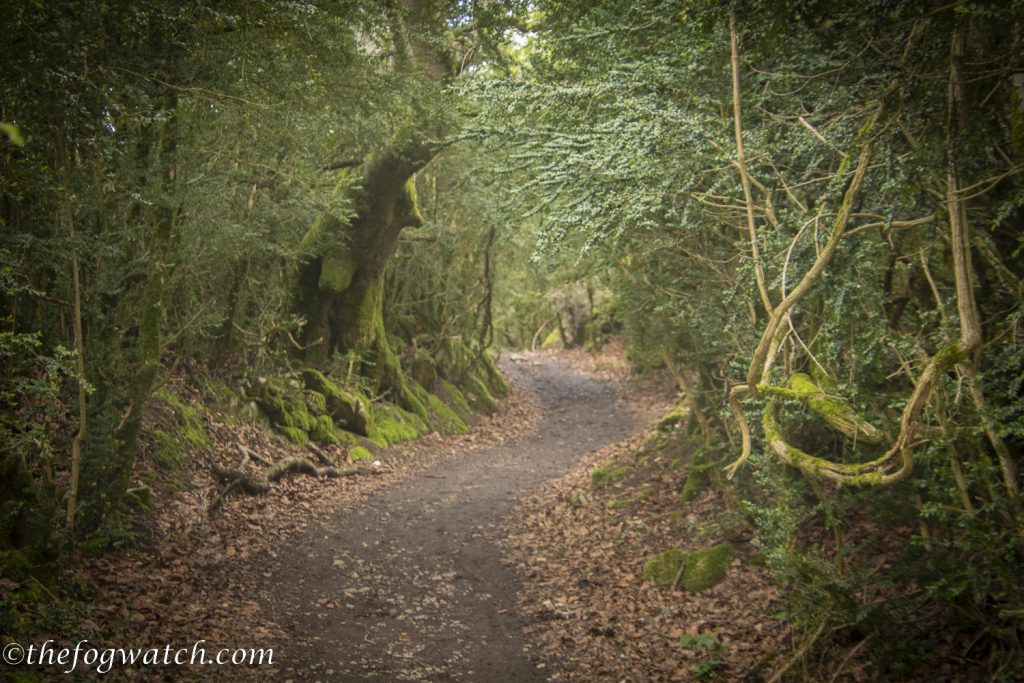
River Crossing
All was well, the sun was shining, the birds were in the air and we set a comfortable pace. You can cross the Rio Erro by the road bridge, but the path takes you down to a ford, which also has a series of rectangular concrete block stepping stones. In warmer weather, you can see pilgrims paddling in the cool water that comes down from the mountains. The meltwater saw the river swelling a little and running fast, so we took to the cement blocks for a safe dry crossing.
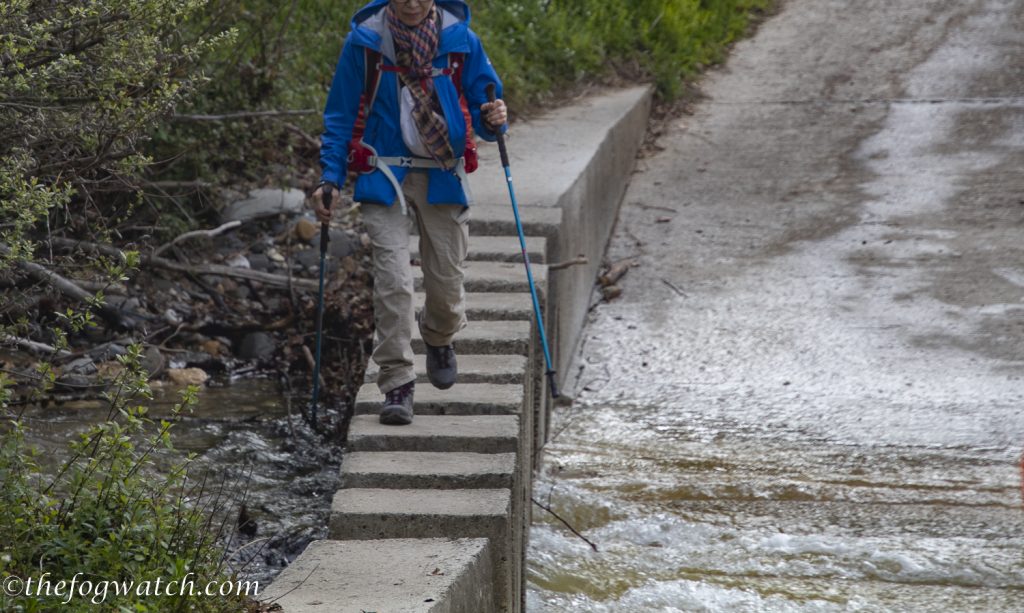
The beech forest made for a pleasant path, a little muddy in places. We stopped at the first bar at Bizcarret for breakfast, passing the familiar Bar Juan on the way through the town. The town is listed in the C12th Codex Calixtinus as the end of the stage from St Jean — medieval Camino stages were considerably longer than the ones we have available today!
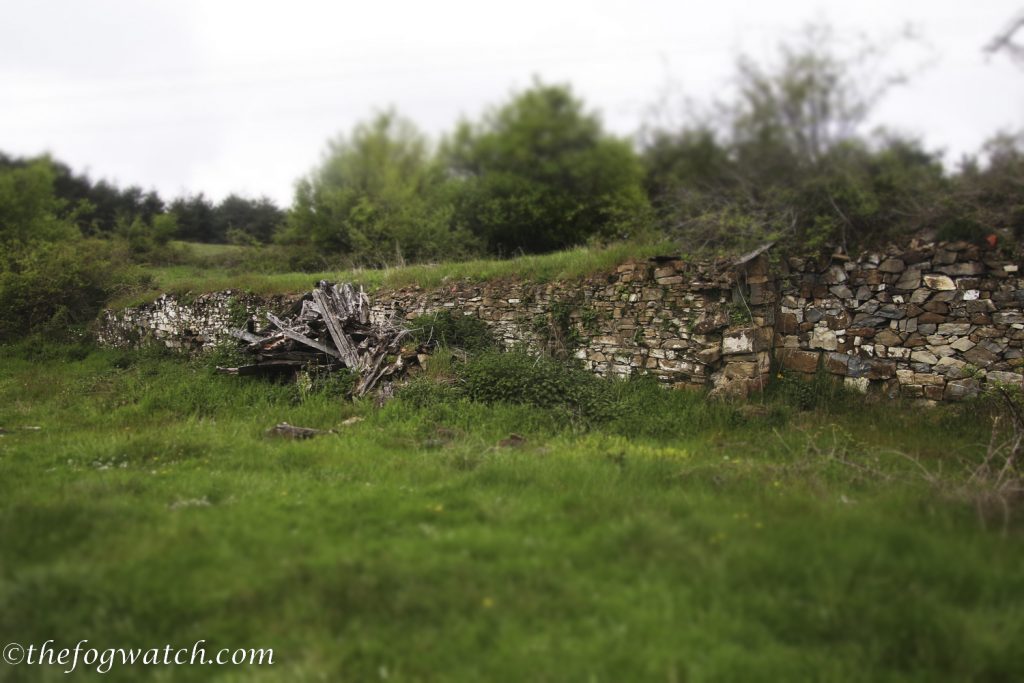
We passed the ruins of a C16th pilgrim hospital or inn, known as the Venta de Puerto before descending from the heights of Alto de Erro. The hamlet once belonged to the monastery of Layre, some 60km to the southeast, according to Gitlitz and Davidson’s detailed book on the Camino route.
Roland’s Stride
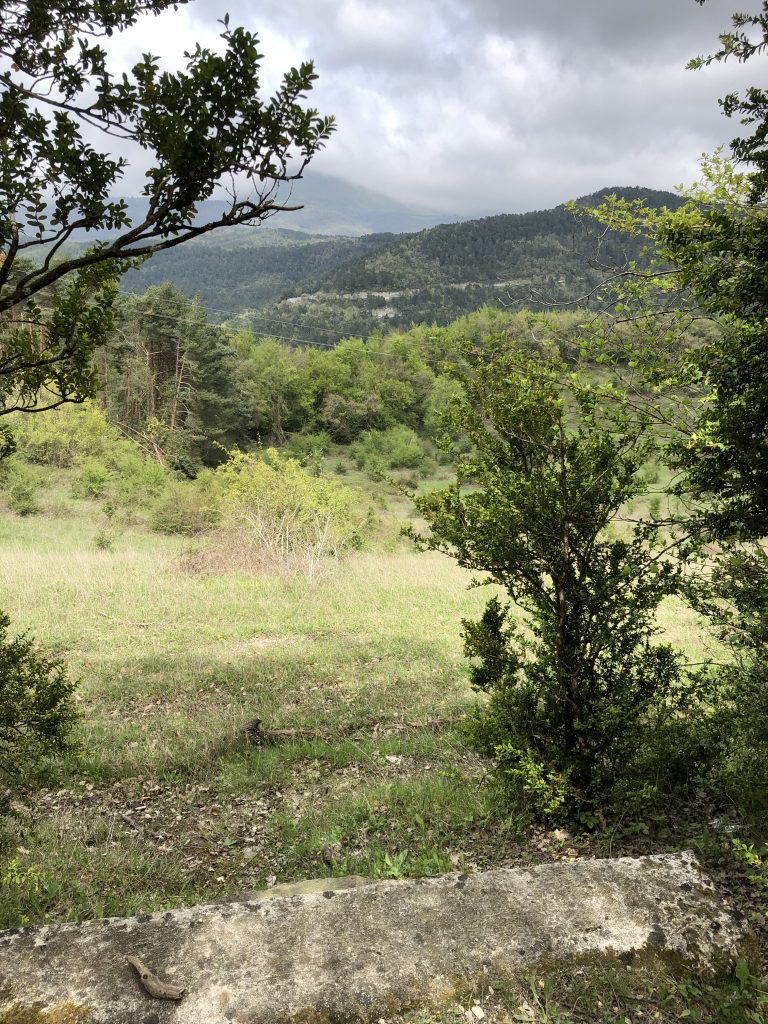
There is also a horizontal menhir or monolithic stone (pictured above) measuring around two metres — according to legend this shows the length of the stride of Roland (or Roldan). He must have been something of a giant, or a decent long-jumper, but like all legends, perhaps the truth was stretched to fit a status befitting Charlemagne’s nephew and flag-bearer.
The ‘Magic Happens’ Kiosk
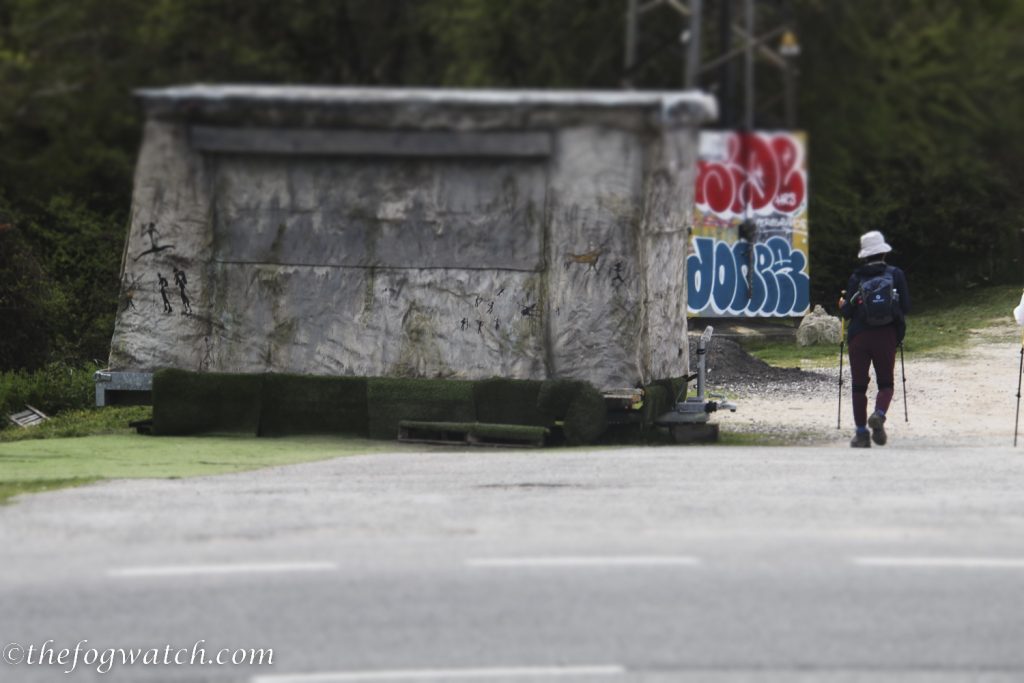
The walk through the woodlands was pleasant, but we looked forward to a coffee at the kiosk on the crossroads. This is the one that in previous years had the underwear box. There’s a wonderful romantic story attached to it. The kiosk had a box for donated items where you could offload superfluous items or perhaps find something you needed. One day, a young peregrina stopped for coffee, and decided to offload some excess weight from her bag — including a bra that she had found uncomfortable. Later that day she met a man — a fellow pilgrim and they completed the Camino together. In front of the Cathedral in Santiago he proposed to her. On their return Camino, she told the barista the story. Since then they have kept a box with the message:
“Looking for a husband or a wife? Leave here your underwear, Magic works!!”
repeated in several languages. The box is always full.
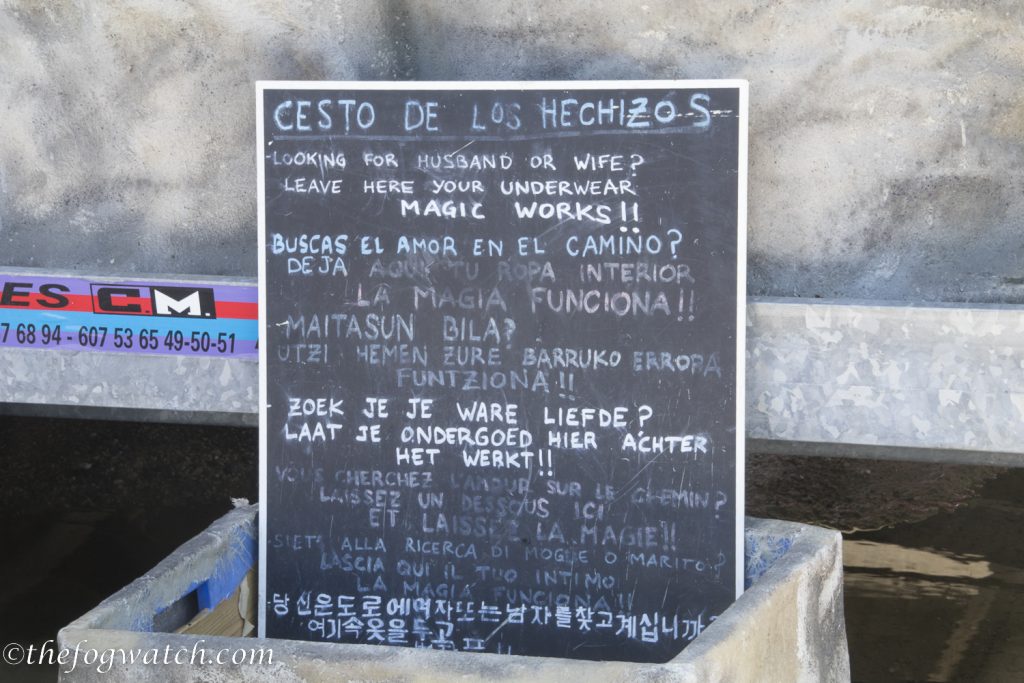
But, as we descended through the pine forest we saw the kiosk closed. A tour bus was pulled in, but there was nowhere to stop for us, and no fountain for water. We walked on and soon began the treacherous final descent into Zubiri.
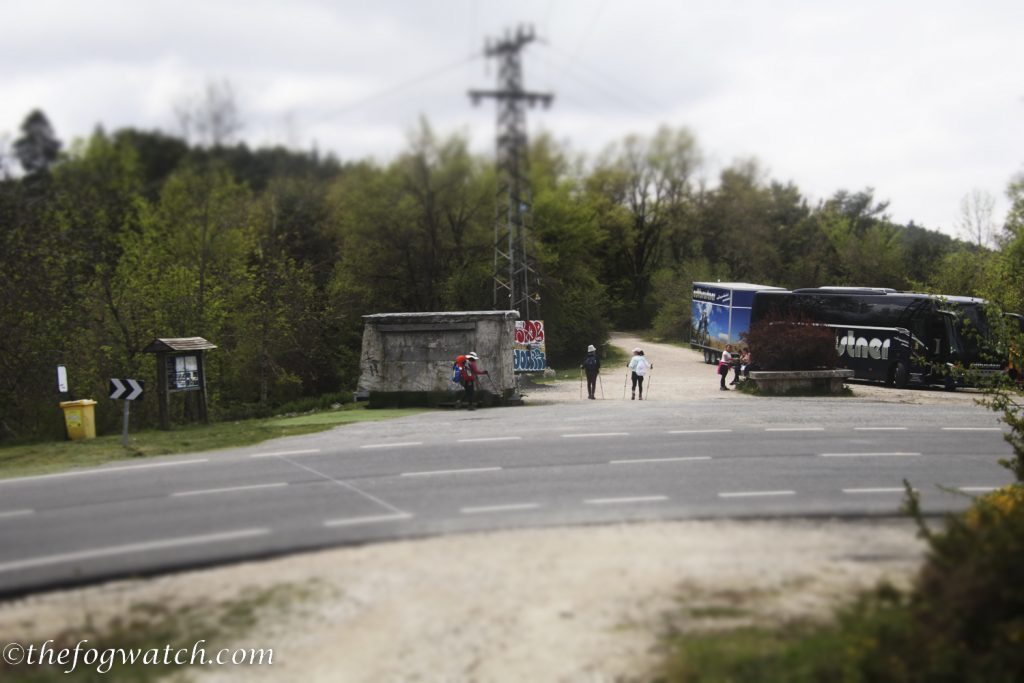
The Treacherous Descent
To understand why the descent is challenging, it’s useful to look at the geology of the place. We are on a hill uplifted by unimaginable tectonic forces. These have set the sedimentary layers of alternating hard granite and soft shale at an angle. In previous years, the angled gaps between the harder rock layers were mostly filled in with sediment, sand and shale. Still not easy, but with the neglect over the past couple of years, much of the ‘fill’ has washed away, leaving angled crevices and loose shale. It is perhaps the perfect anti-personnel trap, as any slip could lead to a camino-ending broken ankle.
I probed some of the gaps — they were as deep as 3-400mm — over a foot and a half deep! It was slow going. We saw two cyclists trying to wheel their bikes down, finally resorting to carrying them instead. There were pilgrims on horseback too. I felt sorry for the horses on that path. Passing one pilgrim who was lying down on the grass beside the path, we asked if he was okay, and he was. He just needed to rest a while.
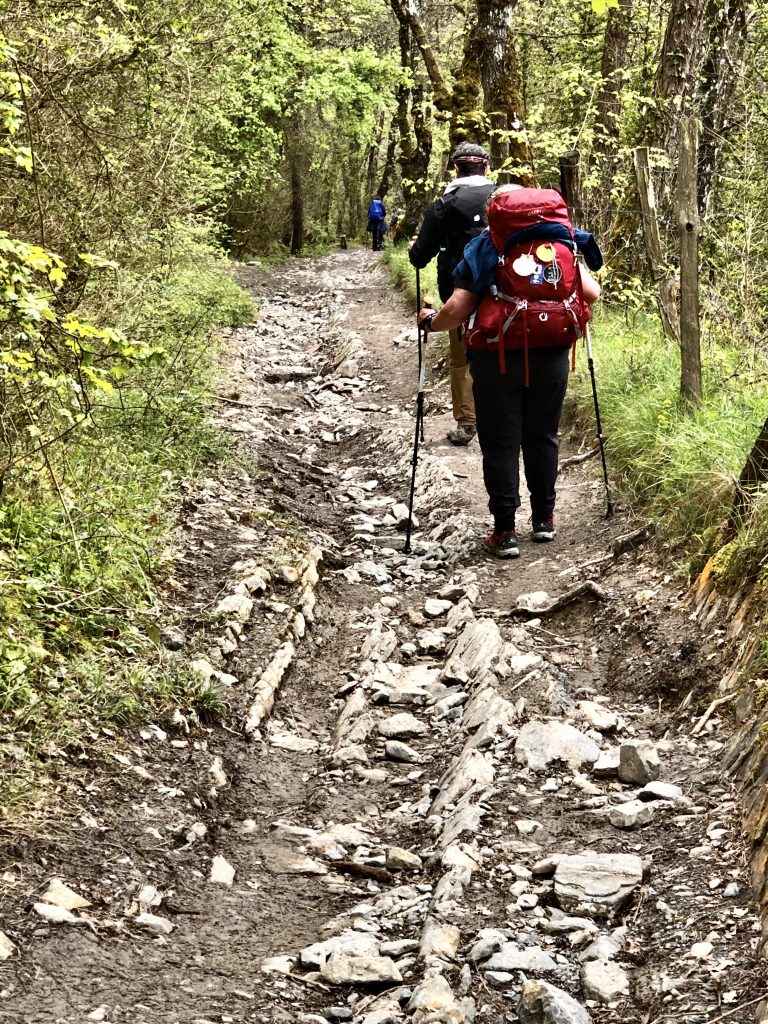
The ‘Rabies’ Bridge
The last three kilometres took as many hours. Eventually, we heard the sounds of schoolchildren, before seeing rooftops. And the track suddenly became a side road leading down to the river. Like Larrasoana, Zubiri is across a river, reached by a medieval bridge. Indeed, the name ‘Zubiri’ comes from the Basque word for ‘bridge’. The bridge is sometimes called ‘El Puente de la Rabia’ — the rabies bridge.
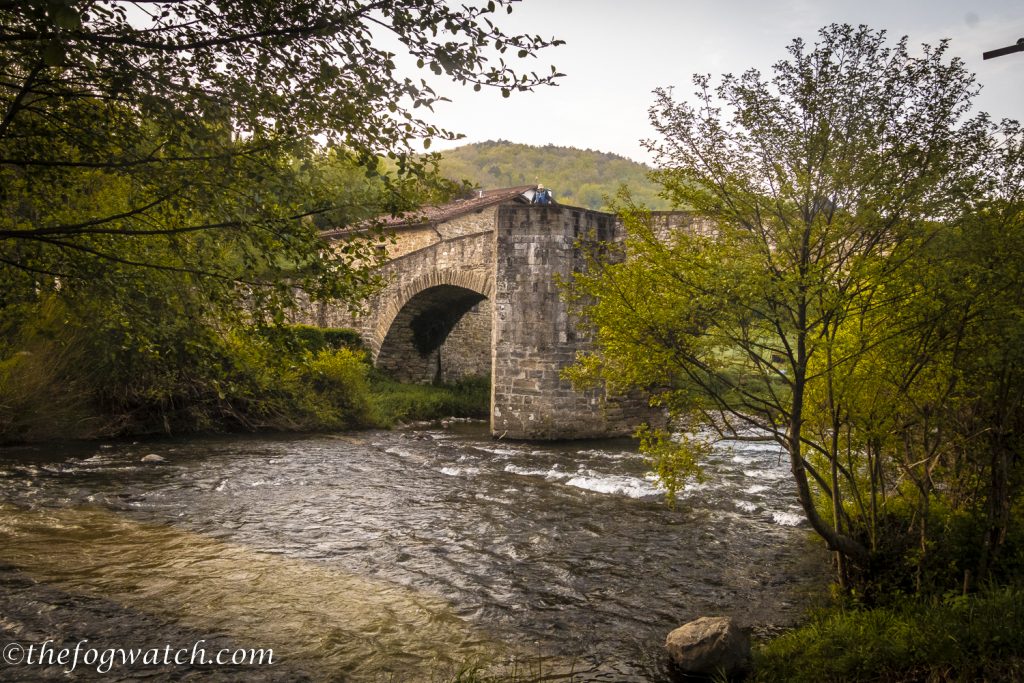
There is a legend that you could cure animals with rabies by leading them three times around the central column. I suspect that if you can lead an animal with rabies anywhere three times, then it probably didn’t actually have rabies in the first place.
We made our way to the Albergue where we had booked a room and settled in. Dinner was down the street at a local bar along with a well-deserved medicinal vino tinto or two.
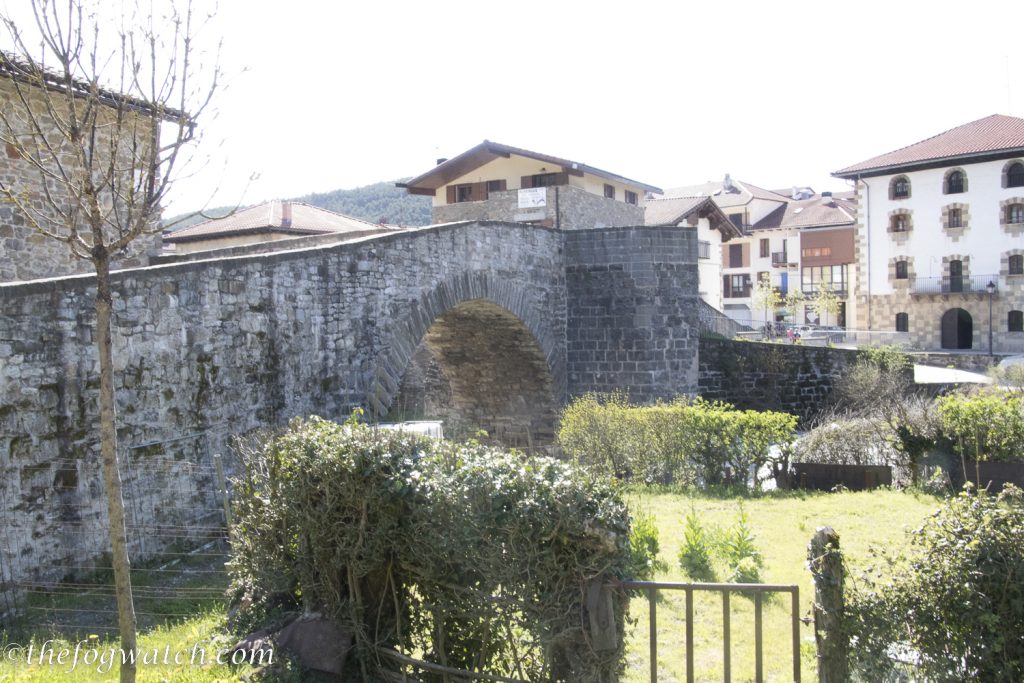

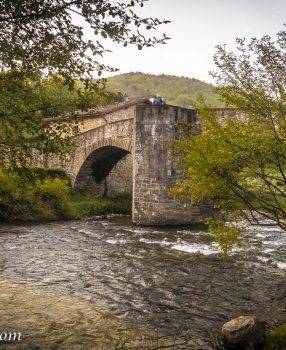
An Awesome story == we will certainly quick an eye on our footing coming towards Zubiri on our Camino next April.
Your energy is truly amazing !
Good luck for your future travels and stay safe.
Best wishes
Andy Lloyd Williams, Bath UK